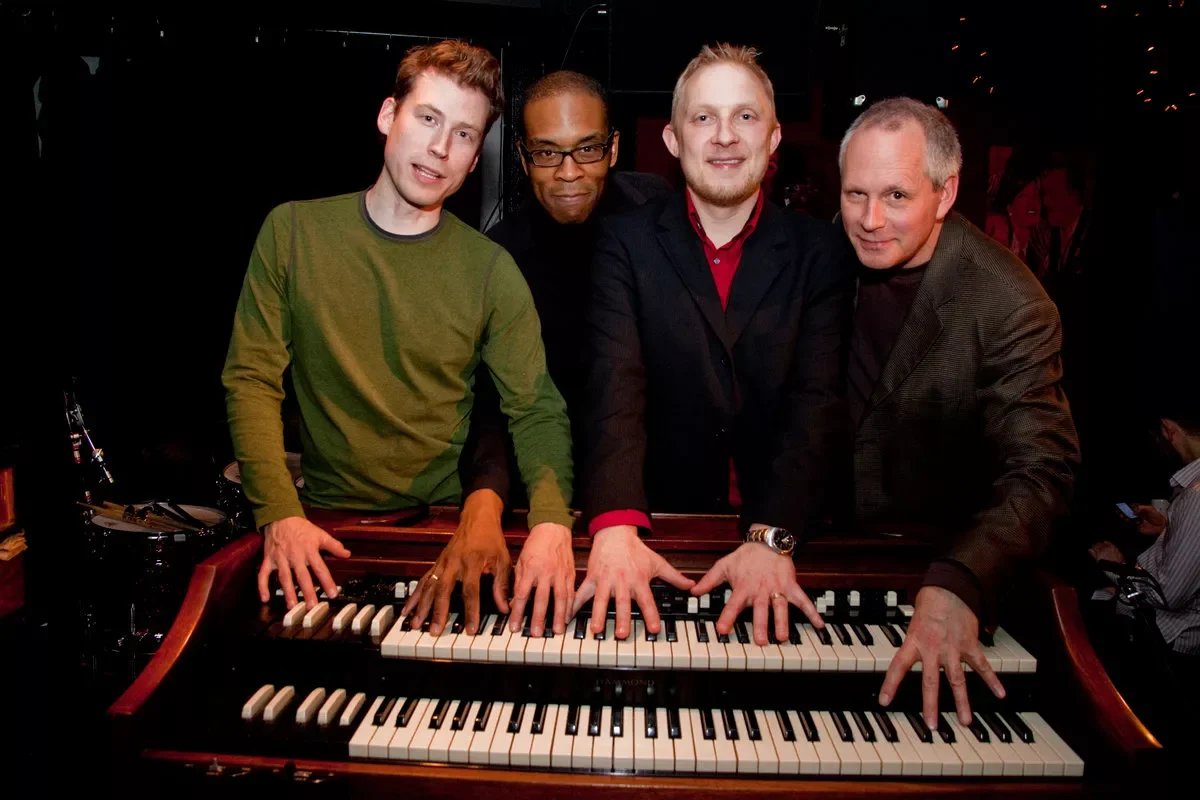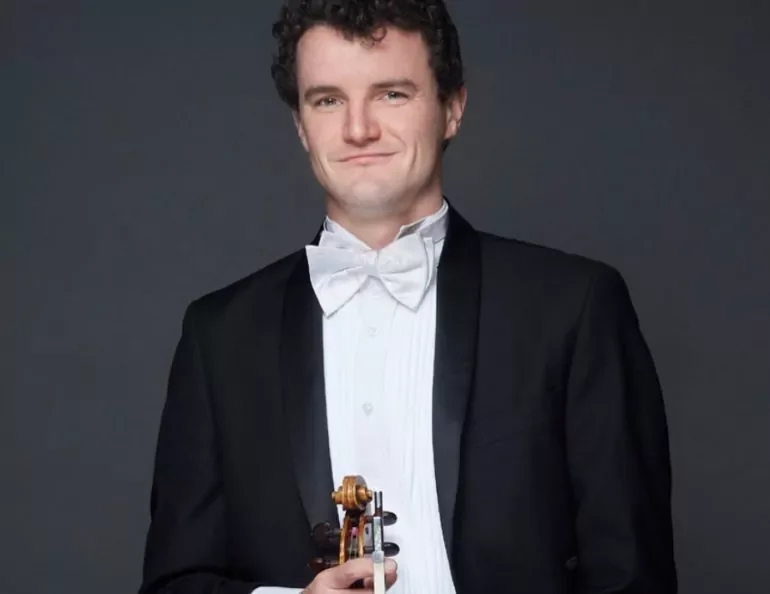Contemporary meets Baroque, as dance artists make Early Music Vancouver's Summer Festival move
Marisa Gold reinterprets a mythical figure in The Queen of Carthage, while Stéphanie Brochard removes layers of Baroque dress in Atempor/elle
Marisa Gold. Photo by Kristine Cofsky
Atempor/elle, with dancer Stéphanie Brochard and viola da gamba player Margaret Little. Photo by Jonathan Mercier
Early Music Vancouver and re:Naissance Opera, with SFU Woodward’s Cultural Programs, present The Queen of Carthage on July 27 at SFU Woodward’s Goldcorp Centre for the Arts; EMV presents Atempor/elle at the Annex on August 3 and Party like it’s 1694! Élisabeth Jacquet de la Guerre at St. James Community Square on August 4
CONTEMPORARY DANCE interweaves with Baroque at Early Music Vancouver’s Summer Festival this year, as two choreographers explore the lives of women.
The grand interdisciplinary opener The Queen of Carthage (a collaboration helmed by re:Naissance Opera’s Debi Wong and EMV’s Suzie LeBlanc) recasts the ruler from the myth Dido and Aeneas—not as a tragic figure but as a trailblazing leader who was a woman of colour.
For the operatic show that mixes Baroque and contemporary music, local dance artist Marisa Gold has been digging into the history of the titular character and the ancient myth of the queen Dido. In Virgil’s Aeneid, Dido, queen of Carthage, is a strong, independent leader who falls in love with Aeneas—turning to despair and ultimately ending her life when he leaves her to fulfill his destiny. Early music composer Henry Purcell memorialized the myth in his opera Dido and Aeneas.
Gold, who choreographs and also performs the piece as a duet with Juolin Lee in this world premiere, says that she’s found the queen relatably human and complex.
“The movement is going to be portraying and expressing different facets of the queen and different phases of her life, too, because she was a political leader, a lover, and an empire builder,” Gold tells Stir in an interview before rehearsals. “And she was also kind of an outcast rejected by her lover; we can see her with fresh eyes as this fellow human being who faces this rejection.”
The contemporary dance, Gold explains, is integrated fully into the music—which spans Baroque works by Purcell and John Dowland and new operatic commissions by Afarin Mansouri, Robyn Jacobs, and Jessica McMann, with Mexican soprano Cecilia Duarte singing the part of the queen.
“Juolin and I will be expressing her inner struggles,” explains the Vancouver dance artist, who says she’s been inspired by the sharpness of Baroque rhythms contrasting the more fluid emotional embodiment of contemporary dance. “She's this powerful queen, but then there are the challenges of her kingdom going to war and there’s insecurity she has. There’s strength, but also, as a lover, vulnerability.
“I’m really excited because we’re doing this different take on this tragic story—with more of an empowering aspect to it,” she adds.
Stephanie Brochard. Photo by Frédérique Cloutier
Later in the fest, in Atempor/elle: In Search of Inner Coherence, dance artist Stéphanie Brochard expresses not the story of a mythological figure, but of herself.
The French-born, Montreal-based artis, who is co-artistic director of early-dance company Les Jardins Chorégraphiques, has a unique combination of training. It spans not only contemporary but in classical Baroque dance—a rare style she first encountered and fell in love with in Europe at just 12.
“What I love about Baroque dance is the relationship with the music: the tightness between music and movement, the intricacy of it, the elegance of it,” she says, speaking in a separate phone call with Stir, “and that’s also what I’m trying to bring to the contemporary world. What I love is to bring the elegance and presence together with the openness and roundedness and authenticity of contemporary dance. My approach to contemporary is very influenced by Baroque because I really like precision!”
The work is a duet with viola da gamba virtuoso Margaret Little, who plays both Baroque scores and new works that range from what she calls a remarkably contemporary-sounding piece by the 18th-century’s Karl Friedrich Abel to a striking work by of Montreal composer Ana Sokolovic. Little becomes an integral part of the pas de deux, shifting between observer, provocateur, protagonist, and confidante. “I love the sound of the viola da gamba, because it’s almost like a voice,” the choreographer says.
The piece finds Brochard moving about the stage wearing, and slowly removing, layers of heavily frilled skirts and tightly corseted Baroque costuming. That play with fabric came naturally to the artist.
“When you think about Baroque, you think about costume—that kind of goes together,” she says. “That encombrant—bulky—clothing often stops you from moving in certain places. For example, you can’t lift your arms with the corset, which is exactly why the arm movements are the way they are! So the costumes ruled a lot of the way the movement was done.
“For me that was an interesting entry point to this work,” continues Brochard, who also wears a mask in the work. "How can this costume be put in circumstances that are completely improbable and unexpected? You would only expect this woman to be standing vertical with small foot movements.” Not so for Brochard, who appears here rolling, contorting on the floor and anything but the refined, polite picture of codified Baroque female performer in Atempor/elle.
“It’s about freeing yourself from all these layers of costumes, but these are also layers of what to do and not to do,” the dance artist explains. “It’s really about finding your way through all those layers, getting rid of them, and trying to be herself.”
Take another view of Brochard’s unique Baroque-contemporary choreography in a short work that’s part of the Party like it’s 1694! Élisabeth Jacquet de la Guerre program. In it, the dance artist retraces the queen’s tumultuous life over a matter of minutes, from success to sorrow over losses, to a violin sonata.
The result, like so much else at this year’s EMV festival—themed “Women in Sight”—ends up inhabiting a timeless place, merging the artistry of the present with the centuries-old past into something altogether new.















